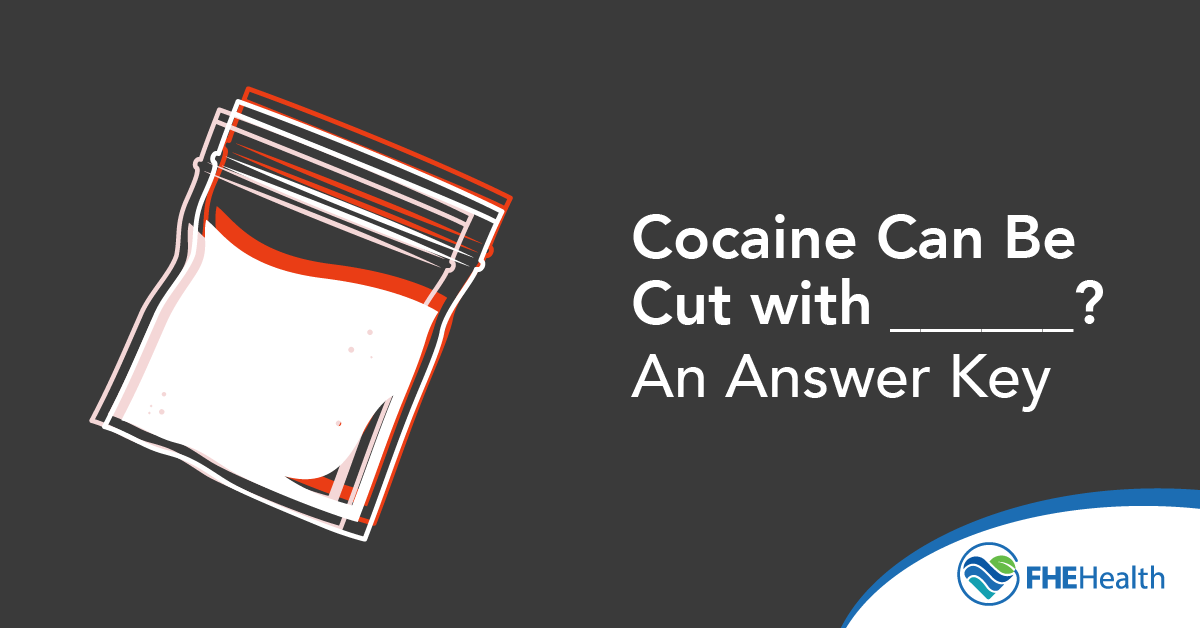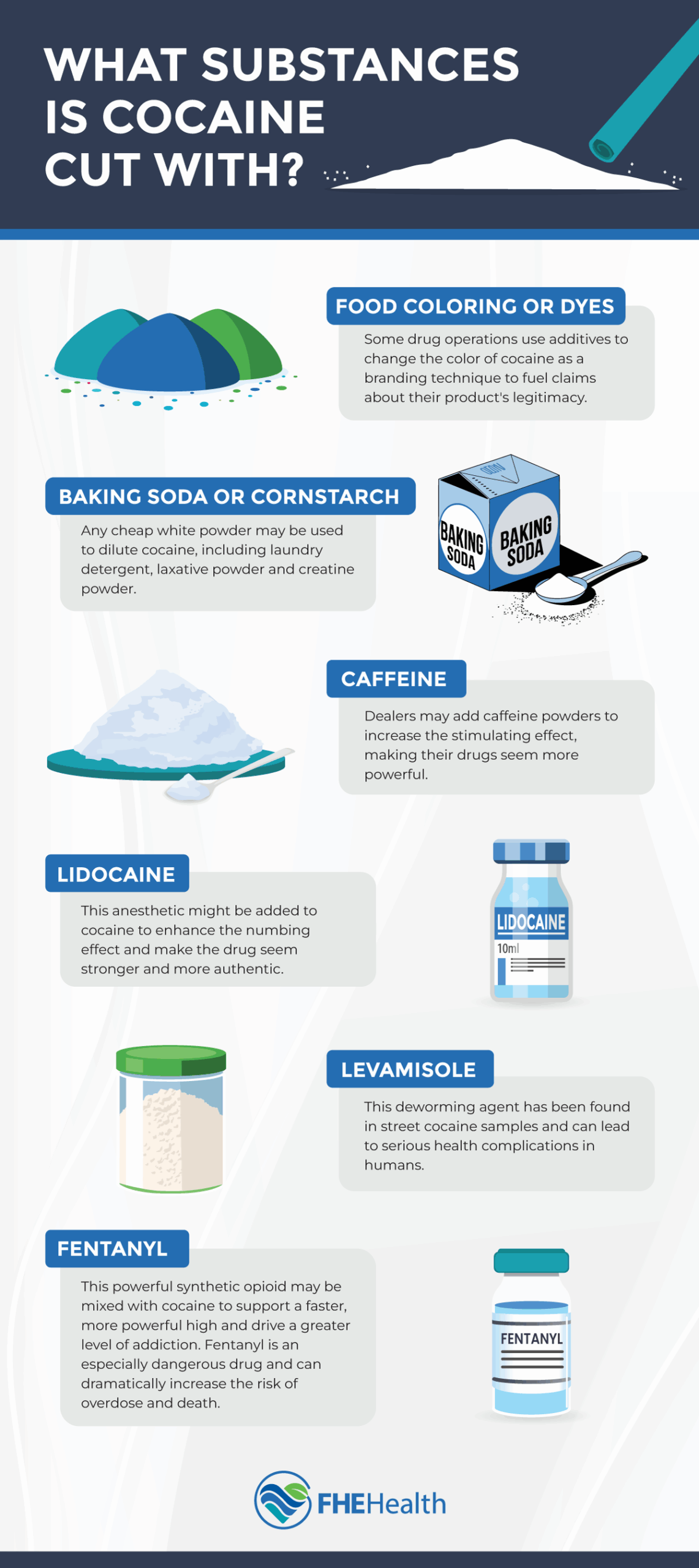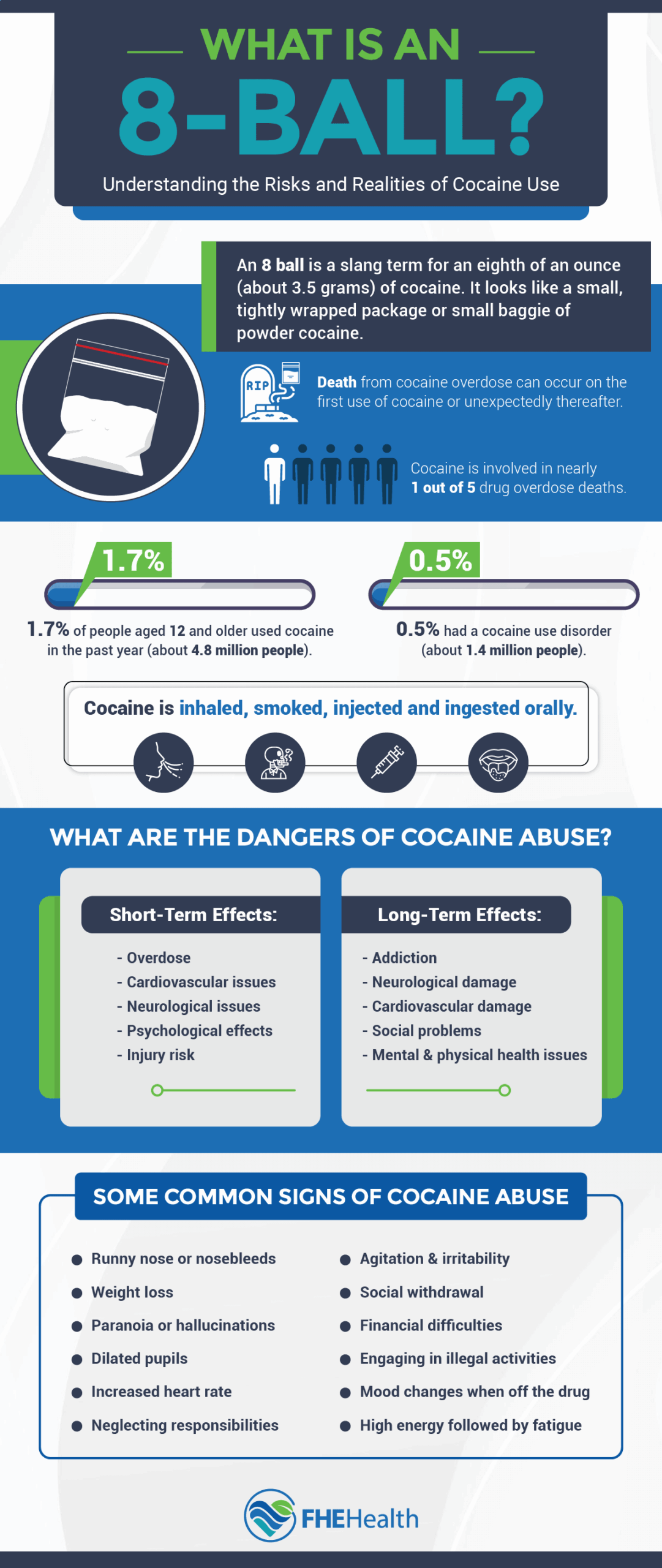
In the United States alone, around 2.2 million people report cocaine use. However, most of the drug that’s sold on the street isn’t pure cocaine hydrochloride. It’s cut with a variety of substances, from harmless fillers such as lactose to dangerous synthetic opioids like fentanyl. In some cases, dealers even use novelty dyes, giving rise to “yellow cocaine” and “blue cocaine.”
Understanding what dealers cut cocaine with can help individuals and their loved ones recognize its dangers and take steps to stay safe. In this article, we take a look at what cocaine is cut with and how these risky combinations can jeopardize the individual’s health.
Why Cocaine Is Often Mixed with Other Substances
There are two primary reasons people cut cocaine with other substances. First, it allows dealers to make more money. Second, it may be done to enhance the high.
Profit Maximization
One of the most common reasons dealers cut cocaine is to make more money off their supply. By mixing cocaine with cheap, easily accessible fillers, they can stretch a limited supply to sell more grams. In fact, according to a 2022 analysis, street-level cocaine samples in Philadelphia contained between 18.2 and 99.8 percent of non-cocaine substances. Some common fillers include baking soda, powdered sugar, and mannitol.
These additives let dealers sell more product without having to source more cocaine, providing a significant boost to profits. Unfortunately, consumers can’t tell the difference between pure and adulterated cocaine, increasing their risk of accidental overdose, adverse reactions, and addiction.
Altering Psychoactive Effects
Cheaply adding bulk to make more money isn’t the only reason dealers cut cocaine with other substances. Some cutting agents are chosen specifically to enhance cocaine’s psychoactive effects.
Substances such as caffeine may be added to increase the energy or sense of euphoria someone gets from using the drug, while adding numbing agents can make heavily adulterated cocaine seem purer and more potent than it actually is.

Common Adulterants Found in Cocaine
Cocaine sold on the street is rarely 100-percent pure. Instead, dealers usually cut it with a wide variety of substances. Some of these are relatively harmless, while others can cause significant harm. Understanding what these adulterants are and why they’re used can help individuals recognize the risks associated with cocaine use.
Harmless Fillers and Baking Agents
Certain fillers are commonly used because they’re cheap, easy to obtain, and look very similar to cocaine. For example, baking soda often adds bulk to crack cocaine, while sweeteners such as powdered sugar and mannitol closely mimic cocaine’s texture and are commonly used in powdered forms meant for nasal use. These additives are considered to be fairly low-risk, although they can cause harm if they’re snorted or injected over time.
Local Anesthetics and Legal Pharmaceuticals
Other common substances dealers may add to cocaine are local anesthetics and over-the-counter drugs. These additives can mask poor quality by mimicking cocaine’s numbing effect.
Lidocaine and benzocaine are local anesthetics that are readily available from a pharmacy. Like cocaine, they cause a numbing sensation, which can make the drug seem purer than it really is. Similarly, procaine and tetracaine are local anesthetics that are very similar to cocaine’s texture and effects, and crushed acetaminophen and aspirin blend in easily with powdered cocaine.
All these substances are legal and medically approved for other uses. However, ingesting or snorting them raw and unmeasured can be dangerous or even life-threatening. For example, lidocaine can trigger serious allergic reactions, while procaine can cause heart problems or dizziness.
Toxic Illicit Cutting Agents
While some additives have little impact on the effects of cocaine, others are highly toxic and pose serious health threats. These may include:
- Levamisole: A veterinary anti-parasitic drug, this common additive can cause skin lesions and a dangerous reduction in white blood cells.
- Fentanyl and synthetic opioids: These substances may be added directly to cocaine or end up in a dealer’s supply due to cross-contamination during processing. Even in small amounts, they can cause unpredictable and dangerous side effects or even be fatal.
- Phenacetin: This banned pain reliever is sometimes used because it has a similar appearance to cocaine. It can cause kidney problems and increase the individual’s risk of cancer.
Colored Variants: Yellow Cocaine and Blue Cocaine
In recent years, colored cocaine variants have gained popularity. They’re often marketed as being stronger and purer than standard white powder, and their novelty makes them seem more exotic or desirable.
To achieve yellow cocaine or blue cocaine, dealers may add food dyes, industrial pigments, or crushed pills. These colorations don’t enhance the drug’s effects but are solely for appearance and marketing purposes. While many food-safe dyes pose little risk, other pigments can introduce health risks.
Despite the belief that colored cocaine variants are purer and more potent, the opposite is usually true. Coloration is often a tactic that may disguise poor quality and mask the presence of harmful additives.

Dangers of Contaminated or Laced Cocaine
Using cocaine always comes with risks, no matter how pure the product is. However, when the substance is cut with unknown or dangerous additives, those risks increase. Contaminated or laced cocaine can cause unpredictable or even deadly side effects, especially if the individual doesn’t know what they’re taking.
- Acute Health Risks
When cocaine is mixed with potent substances, the individual is significantly more likely to have an adverse reaction. Just a few milligrams of fentanyl can be deadly, and additives such as caffeine and methamphetamine can increase the heart rate and the risk of a heart attack or stroke. Local anesthetics are known allergens for many people, so the presence of lidocaine or benzocaine could trigger an uncomfortable or even dangerous response. - Long‑Term Complications
Outside of the immediate dangers of overdose, prolonged use of contaminated cocaine can lead to serious long-term complications. Additives like levamisole can suppress immune function and increase the individual’s risk of illness or infection.
Individuals may also experience kidney, liver, or lung damage, as well as neurological effects such as seizures and cognitive decline. Additionally, some cutting agents make cocaine more addictive, increasing the individual’s odds of developing dependency.
Identifying and Avoiding Dangerous Cocaine Mixtures
Street cocaine is rarely pure, and it can be almost impossible to identify what’s really in it. Dealers intentionally bulk up their supply with substances that are virtually indistinguishable from cocaine’s appearance and effects. Even so, there are a few clues that can indicate heavily adulterated and potentially dangerous mixtures.
Visual and Sensory Clues
Cocaine is typically white or off-white. Yellow cocaine or blue cocaine contains added dyes and is often a sign of excessive additives. Individuals can test purity by seeing how the substance dissolves in water, whether it dissolves uniformly or leaves a residue.
The powder’s texture can indicate the presence of additives. If it feels overly chalky or grainy, it probably has added sugars such as mannitol. Similarly, if it has an overly medicinal or bitter odor, the dealer may have added fentanyl or lidocaine.
At‑Home Testing Methods
Although no at-home testing method can guarantee the purity of street cocaine, testing kits can help individuals determine whether the drug has dangerous additives. Reagent tests such as Mecke and Marquis can detect the presence of specific substances in a sample, while fentanyl test strips are fairly accurate, easy to use and widely available.
Even with testing, there’s no such thing as “safe” street cocaine. However, practicing harm reduction can reduce the risk of overdose and other health consequences. For example, individuals should avoid using cocaine when they’re by themselves, and they should make sure they never mix cocaine with alcohol or other recreational drugs. It’s also important to have an opioid rescue kit on hand in case of exposure to fentanyl.
Seeking Professional Help
While seeking minimally adulterated cocaine and practicing harm reduction strategies can lower the risk of immediate dangers, long-term use often causes serious physical, mental, and emotional consequences. If cocaine use is interfering with your everyday life, it’s time to get professional help.
At FHE, our comprehensive cocaine addiction treatment program provides support, accountability, and practical guidance every step of the way. Contact us today to learn about our inpatient and outpatient treatment programs.






